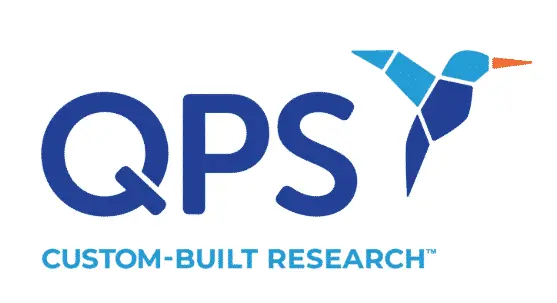Ongoing developments in gene therapy continue to demonstrate its potential to transform the global healthcare system. Gene therapies may be the key to unlocking treatments and cures not only for a range of inherited genetic conditions but also for cancers, infections, and other serious illnesses. There are two methods by which gene therapy can be administered: in vivo and ex vivo. Are there specific advantages to in vivo vs. ex vivo gene therapy? Each offers its own set of benefits and considerations.

Exploring In Vivo vs. Ex Vivo Gene Therapy
When it comes to in vivo vs. ex vivo gene therapy, the most basic distinction between the two strategies is the delivery method. At the simplest level, the difference between the two can be understood as such:
- With in vivo gene therapy, new or therapeutic genes are introduced or injected directly into the body.
- With ex vivo gene therapy, cells are modified or treated in a lab before being returned to the body.
What does this look like specifically in the field of gene therapy? Below, we’ll detail the essential differences between the approaches.
In Vivo Gene Therapy Methods
In vivo gene therapy involves directly introducing therapeutic genes into the patient’s body. New genetic material is first created in a lab and then delivered to the patient’s cells directly – typically by infusing it into the blood or, in some cases, injecting it directly into a target organ. Often (though not always) this is done using viral vectors as a delivery system. Viral vectors, modified viruses that have been stripped of their disease-causing abilities, are engineered to carry and deliver the therapeutic genes to target specific cells within the patient’s body.
Along with viral vector delivery, in vivo gene therapy methods also include CRISPR-Cas9 therapy, RNA Interference (RNAi), naked DNA injection, and more.
When Are In Vivo Gene Therapy Methods Used?
In vivo gene therapy methods are often used when treating a genetic disorder that affects one specific gene or when targeting an internal organ, like the heart, brain, or lungs.
FDA-approved in vivo gene therapies in use today include a treatment for a rare inherited form of vision loss and a therapy for pediatric patients with spinal muscular atrophy.
Ex Vivo Gene Therapy Methods
With ex vivo gene therapy, the patient’s cells are harvested so they can be genetically modified in a laboratory setting. Once the genetically modified cells have been treated in the lab setting, they are returned to the patient.
Ex vivo gene therapy methods include ex vivo gene insertion using CAR-T, ex vivo gene transfer, and more.
When Are Ex Vivo Gene Therapy Methods Used?
Today, ex vivo gene therapies are most commonly used to treat blood disorders and diseases, ranging from leukemia and lymphoma to sickle cell disease (SCD) in children. Often beneficial for external organs, like the eyes, ex vivo therapies show promise in treating a variety of vision conditions, including corneal disease, glaucoma, and retinal degeneration.
Ex vivo therapies are often useful when the target cells are not easily accessible or when there is serious concern about a patient’s own immune response to treatment. Ex vivo therapies also offer the ability to exercise more precise control over the process of creating or manipulating genetic material. Doing so in a lab setting means that scientists are able to confirm that the newly introduced genetic material is functioning as intended before reintroducing that genetic material to the body.
In addition, in a recent preclinical trial, researchers in Barcelona designed a strategy for using an ex vivo gene therapy approach that successfully reduced weight, fatty liver, cholesterol, and glucose levels in mouse models of obesity. Their strategy revolved around generating and implanting cells that express the CPT1AM protein, an enzyme involved in lipid oxidation and related to metabolic diseases like obesity and glucose intolerance. The team’s findings point toward the possibility of using similar ex vivo gene therapy strategies to treat obesity and high cholesterol.
Two Promising Pathways Forward
Both in vivo and ex vivo gene therapies represent a revolutionary path towards healing and treating conditions that have previously been considered incurable, including cancer, human immunodeficiency virus (HIV), Parkinson’s disease, severe combined immune deficiency (SCID), hemophilia, Beta-thalassemia, cystic fibrosis, hereditary blindness, Duchenne Muscular Dystrophy (DMD), and more.
QPS is a GLP/GCP-compliant CRO delivering the highest grade of discovery, preclinical, and clinical drug development services. Since 1995, it has rapidly expanded from a bioanalysis shop to a full-service CRO with 1,100+ employees in the US, Europe, India, and Asia. Today, QPS offers expanded pharmaceutical contract R&D services with special expertise in neuropharmacology, DMPK, toxicology, bioanalysis, translational medicine, and all phases of clinical development. QPS has CLIA-certified and GLP-compliant laboratories ready to fast-track gene therapy, RT-qPCR/QPCR, serological assays, and vaccine development programs. An award-winning leader focused on bioanalysis and clinical trials, QPS is known for proven quality standards, technical expertise, a flexible approach to research, client satisfaction, and turnkey laboratories and facilities. For more information, visit www.qps.com or email info@qps.com.







